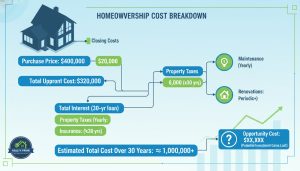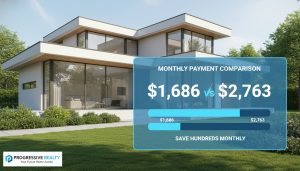How does the principal residence exemption work?
Want to avoid capital gains tax when you sell your home? Read this first.
What the principal residence exemption (PRE) does
The principal residence exemption (PRE) lets eligible homeowners reduce or wipe out the capital gains tax when they sell a home they lived in. In Canada, if a property qualifies as your principal residence for each year you owned it, you can often shelter the entire gain from tax.
Who qualifies
- You (or your family) must own the property.
- The property must be a housing unit: house, condo, cottage, or eligible mobile home.
- You must ordinarily inhabit the property during the years you claim.
- Only one property per family unit (spouse/common-law partner and dependent children) can be designated as the principal residence for a given year.
How the exemption is calculated (simple formula)
- Calculate the capital gain: Sale price minus adjusted cost base (purchase price + improvements) minus selling costs (legal, realtor fees).
- Apply the PRE formula: Exempt portion = Capital gain x (Number of years designated + 1) / (Number of years owned + 1).
- Remaining gain (if any) is taxable. Remember Canada taxes 50% of capital gains (the inclusion rate) — so only half of the taxable gain is added to your income.
Example: You bought for $400,000 and sold for $600,000. Capital gain = $200,000. You owned the home 4 years but designated it as your principal residence for 2 years.
- Exempt portion = $200,000 x (2 + 1) / (4 + 1) = $200,000 x 3/5 = $120,000 exempt.
- Taxable gain = $80,000; taxable amount reported = $40,000 (50% inclusion).
Important rules and traps to avoid
- Only one property per family can be claimed each year. You can’t designate two homes for the same year.
- Since 2016 you must report the sale on Schedule 3 and designate the property to claim the PRE. Failure to report can trigger penalties and may jeopardize the exemption.
- If you convert your house to a rental or business use, special election rules apply. Changing use can create immediate tax consequences unless you file the right elections (for example, Section 45 election). Get professional advice before converting.
- Improvements that increase the property’s value raise your adjusted cost base (good), but routine maintenance does not.
Quick checklist before you list
- Confirm years you lived in the home versus rented.
- Gather purchase documents, receipts for major improvements, and selling expenses.
- Decide which property your family will designate for each relevant year.
- Report the sale on your tax return and complete required CRA forms.
Bottom line
The PRE is powerful. Proper planning can turn a big taxable capital gain into a tax-free sale. But rules and reporting requirements matter. A missed form or a change of use can cost you thousands.
Need help running the numbers or planning a sale? Contact local real estate tax specialist Tony Sousa for clear, practical guidance: tony@sousasells.ca | 416-477-2620 | https://www.sousasells.ca




















